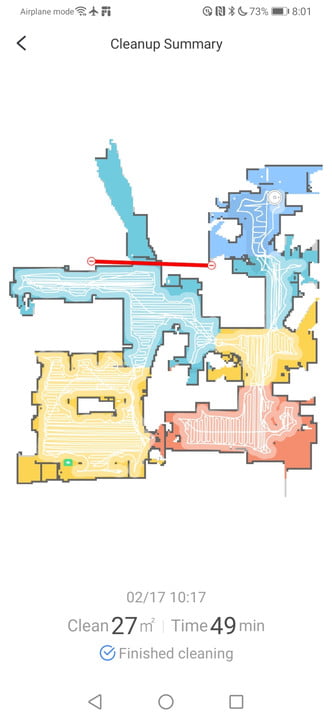Robot vacuums are amazing. They can keep pet hair at bay, mop up small spills, and otherwise keep your home tidy and dust-free between regular thorough cleanings. For the most part, a robot vacuum or robot mop can be set-it-and-forget-it: you can schedule cleanings to happen automatically, and even have certain rooms cleaned on certain days.
But what if you have a pesky rug, pet feeding areas, or odd-shaped piece of furniture that keeps snagging your bot until it runs low on battery and dies without completing its mission? Or if you want to keep the machine out of certain rooms or areas? Today’s robot vacuums are super smart, and it’s easy to control where they can go in your home and where they shouldn’t. Here’s what you need to know.
How to set up boundaries and virtual barriers for robot vacuums and mops
There are a handful of different ways you can keep a robot vacuum from venturing into certain spaces in your home. Depending on the age of the robot and the technology it came with, you have a few different options.
Use the app to set up virtual walls or boundaries
The newest robot vacuums and mops are smart. Equipped with cameras or lasers, they are able to “see” their way around your house, and on their initial runs, will create a pretty detailed map of your space. (When you’re shopping for a robot vacuum, look for robots that advertise LiDAR, which stands for Light Detection and Ranging, or VSLAM, which is Visual Simultaneous Location and Mapping.) Once the mapping is finished, you can see it inside the robot vacuum’s app. Here, you can label rooms, make adjustments to areas, and create virtual walls, no-go-zones, and out-of-bounds areas.
Setting up no-go zones in a robot vacuum app
For the most part, robot vacuum manufacturers are making it easy to manage your space and how it’s cleaned. Some apps let you draw simple lines, while others use pinch-to-size digital boxes to allow you to draw out areas on your virtual home map where you would rather your robot vacuum not venture. Each manufacturer’s app is different, but usually you’ll just need to enter your home’s map then look for terms like Virtual Wall, Virtual Boundary, No-Go Zone, or Keep-Out Zone to enable and adjust these options.
Benefits of setting up virtual barriers and no-go zones for robot vacuums
Whether you are trying to keep your robot vacuum from spilling the dog’s water dish, or you have a pesky sofa that your bot gets continuously wedged under, you can bar your device from entry. Other common reasons for setting up virtual barriers and keep-out zones include needing to keep the bot from getting stuck on low-hanging draperies, or to prevent it from getting caught up in the pile of clothes that’s usually on the floor of the laundry room, for example.
For the most part, robot vacuum manufacturers have made this process intuitive and user-friendly, particularly when it comes to the more popular and well-known brands.
Use magnetic boundary tape
Some older or very inexpensive vacuums give you hardware or manual options for barring a robot vacuum from a particular space.
You might find a roll of flat plastic substance inside the package; this is magnetic boundary tape. This is a physical and visible way of delineating where your robot vacuum should not go, and for that reason, it’s not ideal. This magnetic boundary tape tends to be rather thick and needs to be stuck with double-sided tape to hold it in place. If you don’t do it right, it can become a tripping hazard, but in the best case scenario it is a simple and effective barrier that your robot vacuum will not cross. Because this can be unsightly, many robot vacuum companies have phased this out in favor of other options.
Robot vacuum ‘Lighthouses’
Small, battery-powered devices known as virtual wall lighthouses (VWLH) used to be included in some older robot vacuums like iRobot Roomba devices, and you might still encounter them if you’re buying a used bot off Craigslist. These lighthouses are small cylinders placed around the house or in doorways that use invisible infrared light to block off areas you don’t want your robot to access.
In some cases, these devices can be switched on to create an infrared gate, allowing you to control the bot’s entry into spaces. These lighthouses have largely been phased out now that new mapping technology is more robust, and that mapping tech is also showing up on more and more inexpensive and affordable robot vacuums and mops now too.
Sure, you can close the doors in your home, use a baby gate, or create a sentry line of heavy cans to block your robot vacuum from getting into trouble. But we prefer to use the magic of technology to keep our robot cleaning army on task — and out of trouble. If you need help selecting just the right bot for your home, read up on how to choose a robot vacuum for some tips.

